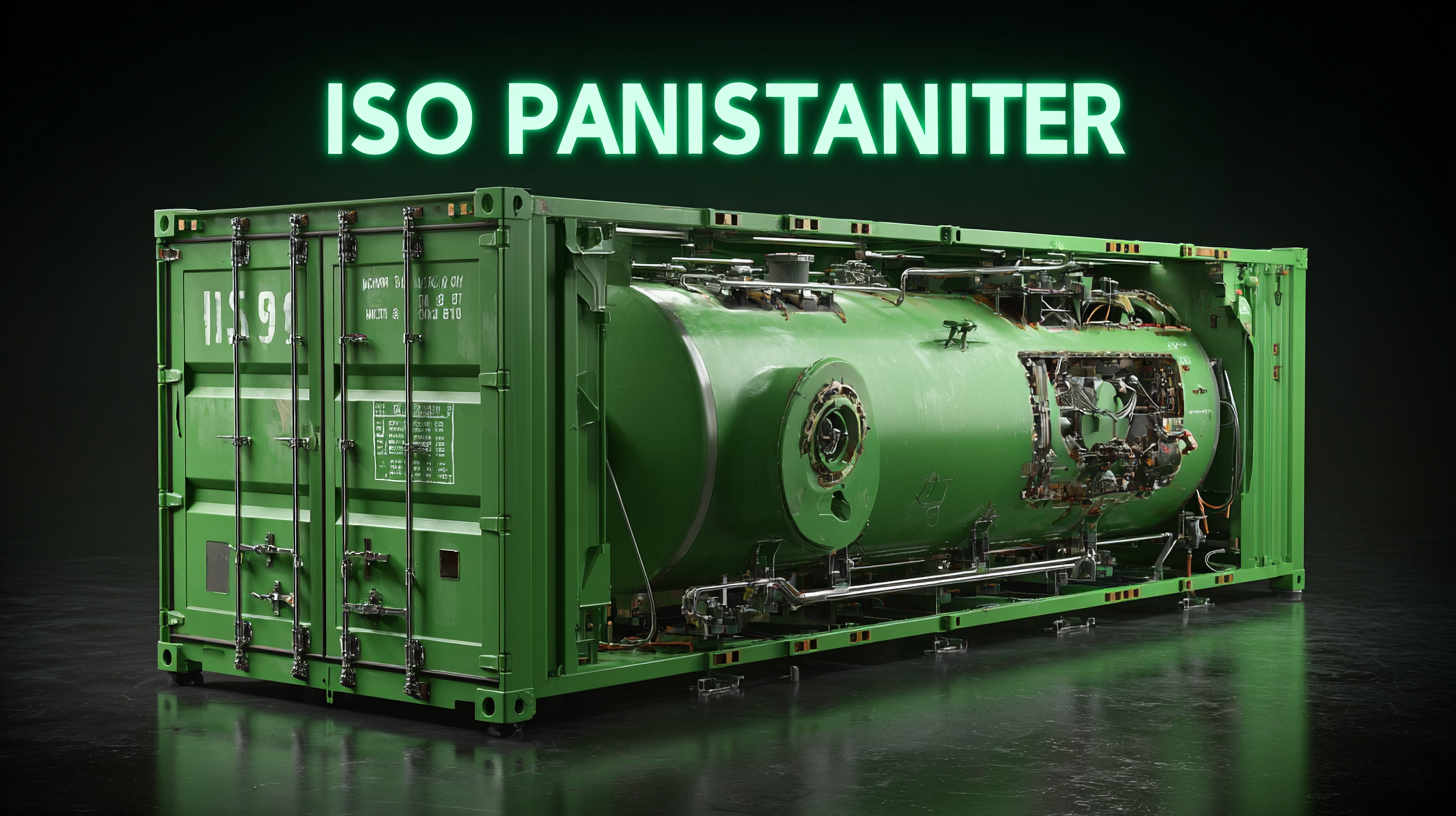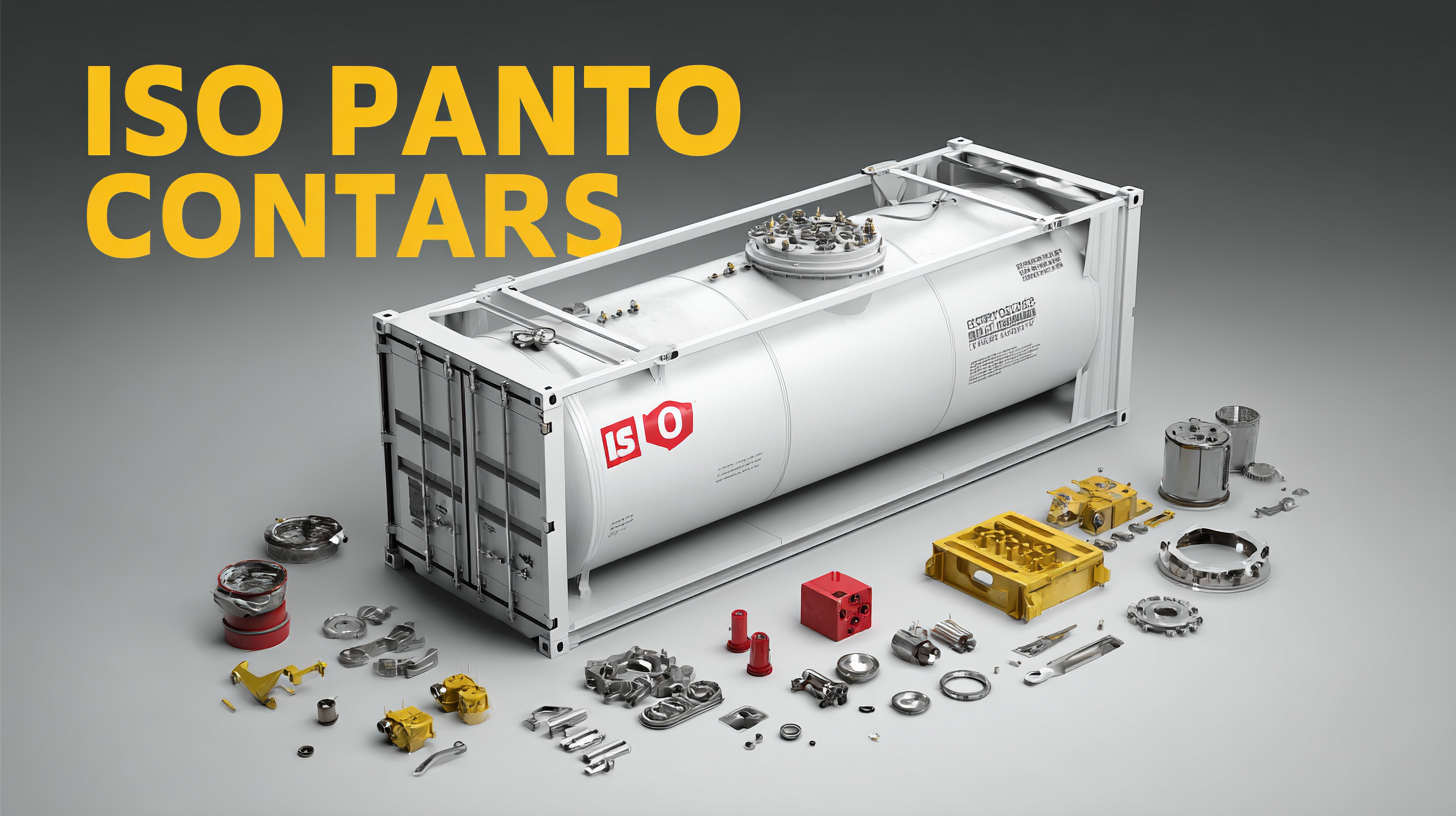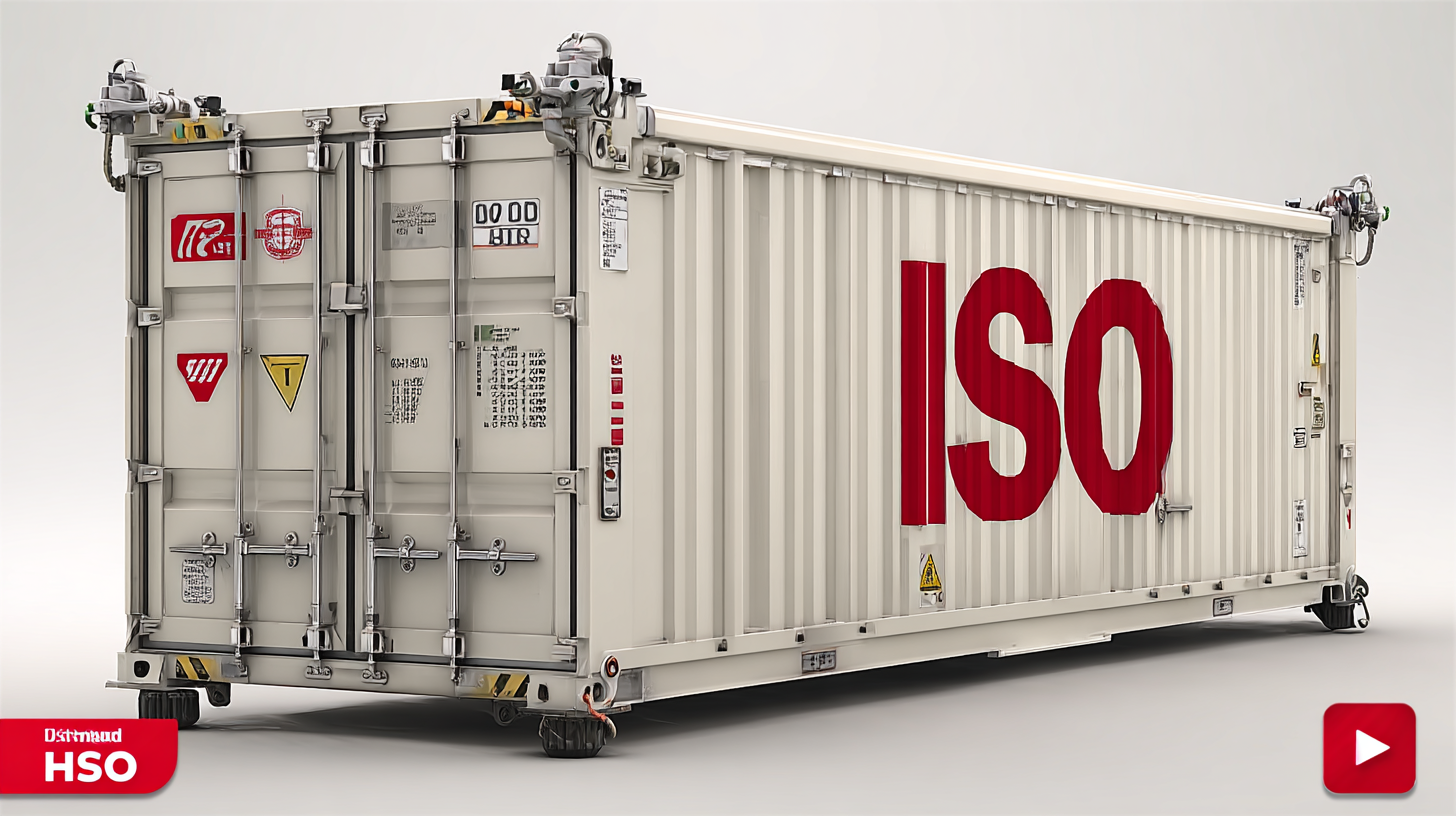- Home
- >
- Knowledge Center
- >
- Blogs
Blogs
Sharing knowledge is key to an innovative and healthy industry! This knowledge center is therefore a central place on our website to share information. Read all about our industry in the blogs below!
How to Choose the Best Iso Tank Container Parts for Optimal Performance
In the burgeoning logistics and transportation industry, the efficiency and reliability of Iso Tank Container Parts play a crucial role in ensuring optimal performance of tank containers. According to a recent industry report by MarketsandMarkets, the global tank container market is expected to grow from USD 2.4 billion in 2020 to USD 4.3 billion by 2025, reflecting a compound annual growth rate (CAGR) of 12.5%. This growth underscores the increasing importance of selecting high-quality components that not only enhance the durability and safety of the equipment but also reduce operational costs.

As industries shift towards more sustainable practices, the choice of materials and manufacturing standards for Iso Tank Container Parts becomes pivotal. This blog will guide you through the essential factors to consider when choosing these critical components, ensuring your operations remain efficient and compliant with industry standards.
Key Factors to Consider When Selecting Iso Tank Container Parts
When selecting the best ISO tank container parts for optimal performance, it's essential to consider key factors based on the capacity and type of container. ISO tanks typically come in a range of capacities: below 20,000 liters, 20,000 liters, 35,000 liters, and above 35,000 liters. For instance, smaller capacities may be more suitable for transporting specialty liquids, while larger tanks are ideal for bulk shipments. Understanding the specific requirements of your cargo can help you choose the right size.
Moreover, the type of container plays a significant role in the selection process. Multi-room tanks are beneficial for transporting different products simultaneously without contamination, while lined tanks ensure the integrity of sensitive contents. Reefer tanks provide temperature control, crucial for perishable goods, while industrial tanks are tailored for heavy-duty usage. Analyze the intended use and environmental conditions to find the most appropriate solution, ensuring that the tank parts chosen meet industry standards and enhance overall performance.
Top 5 Materials for Durable Iso Tank Container Components
When selecting parts for ISO tank containers, the material used plays a crucial role in ensuring durability and optimal performance. Among the top options, CORTEN-A steel stands out due to its superior weathering properties, which allow it to form a protective layer that helps resist corrosion without the need for extensive maintenance. This characteristic is particularly beneficial for containers that are often exposed to harsh environmental conditions.
 Another promising alternative is natural fiber composites, which are making waves as an eco-friendly option. Made from renewable resources like jute, flax, and hemp, these materials offer not only sustainability but also impressive mechanical properties. Their lightweight nature can improve the overall efficiency of tank containers while reducing their carbon footprint. As industries increasingly prioritize environmentally friendly practices, exploring materials like these serves dual purposes—enhancing performance while addressing environmental concerns.
Another promising alternative is natural fiber composites, which are making waves as an eco-friendly option. Made from renewable resources like jute, flax, and hemp, these materials offer not only sustainability but also impressive mechanical properties. Their lightweight nature can improve the overall efficiency of tank containers while reducing their carbon footprint. As industries increasingly prioritize environmentally friendly practices, exploring materials like these serves dual purposes—enhancing performance while addressing environmental concerns.
Lastly, the use of high-strength steels such as S275 and S355 continues to be prevalent due to their excellent load-bearing capacities. These materials provide the robustness required for the safe transportation of goods, ensuring that ISO tank containers can withstand the rigors of shipping. As technology advances, it’s vital to remain informed about the latest materials that can enhance both the functionality and environmental impact of shipping containers.
3 Essential Features for Enhanced Iso Tank Container Performance
When it comes to selecting the best ISO tank container parts, understanding the key features that enhance performance is crucial. One essential feature is the insulation material used in tank construction. High-quality insulation ensures that the temperature inside the tank remains stable, which is particularly important for transporting perishable goods or sensitive chemicals. Choosing parts with superior insulation can significantly reduce thermal loss, thus maintaining the integrity of the contents throughout the transportation process.
Another critical factor to consider is the valve design. Innovative valve systems allow for smoother operations and better control over the flow of substances. A well-designed valve can minimize the risk of leaks or spills, improving safety and compliance with industry regulations. It’s important to select valves that are durable and easy to operate, as they directly impact the efficiency and reliability of loading and unloading processes.
Lastly, the durability of the container parts cannot be overlooked. Components made from high-grade materials are less likely to succumb to wear and tear, leading to longer service life and reduced maintenance costs. By focusing on these three essential features—insulation, valve design, and durability—you can ensure optimal performance of ISO tank container parts, enhancing overall operational effectiveness.
How to Choose the Best Iso Tank Container Parts for Optimal Performance - 3 Essential Features for Enhanced Iso Tank Container Performance
| Feature | Description | Importance | Recommended Material |
|---|---|---|---|
| Insulation | Proper insulation maintains the temperature of the liquid cargo. | High | Polyurethane foam |
| Valves and Fittings | Critical for safe loading and unloading of liquids. | Very High | Stainless steel |
| Pressure Relief System | Prevents over-pressure scenarios during transportation. | Critical | Carbon steel |
Reasons Why Regular Maintenance of Iso Tank Parts is Crucial
Regular maintenance of ISO tank container parts is paramount for ensuring safety and optimal performance, particularly as industries pivot towards alternatives like hydrogen-powered transportation. The increasing adoption of hydrogen fuel underscores the necessity of stringent maintenance protocols. Proper upkeep not only prevents mechanical failures but also mitigates potential accidents that can tarnish a company's reputation. For companies handling hazardous materials, a single mishap can have far-reaching consequences, both ethically and financially.
Moreover, standardization in maintenance practices can streamline operations and reduce risks. By adhering to 'best practices' in the maintenance and repair of ISO tanks, organizations can foster a safer working environment. Regular checks and replacements of critical ISO tank parts bolster reliability, which is essential for compliance with evolving safety regulations. As the push for clean energy gains momentum, ensuring that tank containers are in top-notch condition is integral to supporting sustainable practices in transportation.
Performance Metrics of Iso Tank Container Parts
4 Common Mistakes to Avoid When Choosing Iso Tank Container Parts
 When selecting parts for iso tank containers, avoiding common mistakes is crucial for ensuring optimal performance and safety. One prevalent error is neglecting to verify the compatibility of parts with specific tank models. According to a 2021 industry report by the International Maritime Organization, nearly 30% of container failures are attributed to improper part selection. Always cross-reference part specifications with the manufacturer’s recommendations to ensure a proper fit.
When selecting parts for iso tank containers, avoiding common mistakes is crucial for ensuring optimal performance and safety. One prevalent error is neglecting to verify the compatibility of parts with specific tank models. According to a 2021 industry report by the International Maritime Organization, nearly 30% of container failures are attributed to improper part selection. Always cross-reference part specifications with the manufacturer’s recommendations to ensure a proper fit.
Another frequent oversight is ignoring the quality of materials used in the parts. Inferior materials can compromise the integrity of iso tanks, leading to leaks and hazardous spills. A study published in the Journal of Hazardous Materials indicated that using substandard components increases the likelihood of failures by up to 40%. To mitigate this risk, prioritize parts from reputable suppliers that adhere to ISO standards.
Tip: Always request documentation or certifications for parts to ascertain their quality and compliance. Additionally, ensure that parts are designed for the specific conditions in which the iso tank will operate, such as temperature and pressure variances.
Moreover, many buyers underestimate the importance of regular maintenance and inspection of tank parts. Failing to replace worn components can lead to severe operational issues. A report by the International Tank Container Organization showed that regular maintenance checks can reduce operational downtime by 25%. Establish a routine maintenance schedule to ensure all parts are in optimal condition, focusing on high-wear items like valves and seals.
